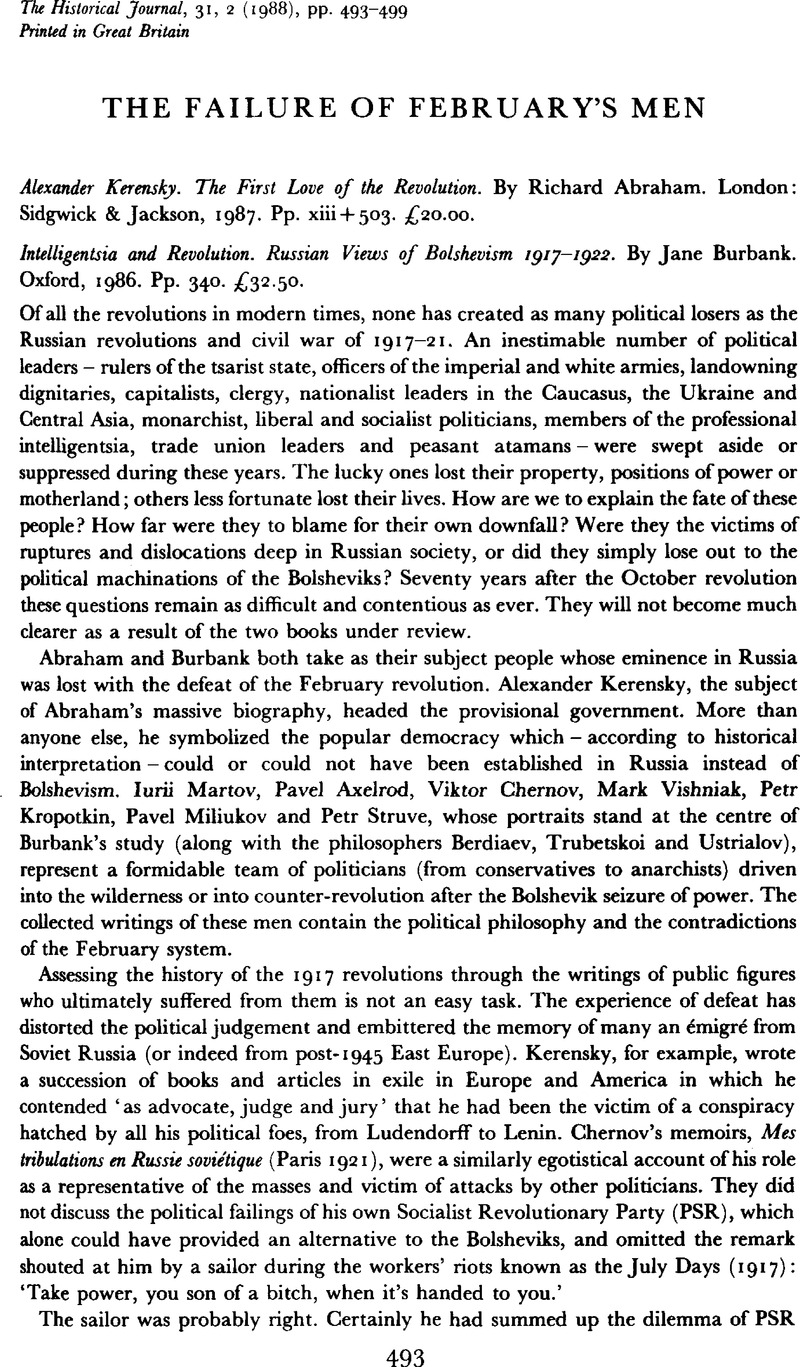No CrossRef data available.
Article contents
The Failure of February's Men
Published online by Cambridge University Press: 11 February 2009
Abstract

- Type
- Review Articles
- Information
- Copyright
- Copyright © Cambridge University Press 1988
References
1 Engels, F., The German revolutions: ‘The Peasant War in Germany’, and ‘Germany: revolution and counter-revolution’, ed. Krieger, L. (Chicago, 1967), p. 135Google Scholar.
2 See, for example, Ferro, M., October 1917: A social history of the Russian Revolution, translated by Stone, N. (London, 1980)Google Scholar; Koenker, D., Moscow workers and the 1917 Revolution (Princeton, 1981Google Scholar; Smith, S. A., Red Petrograd. Revolution in the factories 1917–1918 (Cambridge, 1983)CrossRefGoogle Scholar; Raleigh, D. J., Revolution on the Volga, 1917 in Saratov (Cornell, 1986)Google Scholar.
3 Lewin, M., The making of the Soviet system, (London, 1985), p. 7Google Scholar.
4 I am thinking in particular of Getty's, J. ArchOrigins of the Great Purges (Cambridge, 1985)CrossRefGoogle Scholar and, to a lesser extent, of Dunmore's, T.The Stalinist command economy (London, 1980)Google Scholar which have extended the view of the early Soviet state as a decentralized and pluralist network of differen interest-groups into the Stalinist period. It seems to me that the Soviet state was by 1930 at autonomous political entity, able to suppress most counter-pressures from civil society.
5 Carr, E. H., What is history? (London, 1962), p. 90Google Scholar.
6 See e.g. Rosenberg, W. G., Liberals in the Russian Revolution: the Constitutional Democratic Parly, 1917–1921 (Princeton, 1974)Google Scholar; Pipes, R., Struve: liberal on the right, 1905–1944 (Cambridge, Mass., 1980)Google Scholar; Radkey, O. H., The sickle under the hammer: the Russian Socialist Revolutionaries in the early months of Soviet rule (New York, 1963)Google Scholar; Haimson, L. (ed.), The Mensheviks (Chicago, 1974)Google Scholar.
7 Uchredilka: The right SR-dominated government of the committee of members of the constituent assembly, established in Samara in June 1918.
8 Cited in Getzler, I., Kronstadt 1917–1921: The fate of a soviet democracy (Cambridge, 1983), p. 236CrossRefGoogle Scholar.




